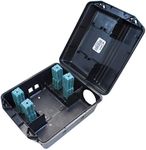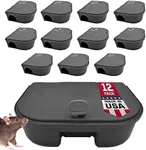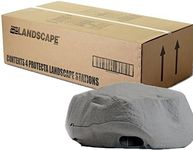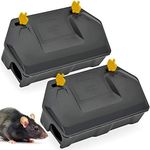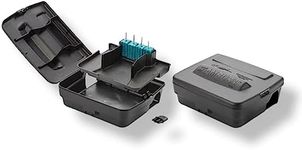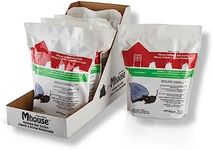Buying Guide for the Best Bait Stations
Choosing the right bait station is important for effective pest control, whether you're dealing with rodents or insects. The right bait station will help you safely and efficiently target pests while keeping children, pets, and non-target animals safe. When shopping for a bait station, it's important to consider where you'll use it, what pests you're targeting, and how often you'll need to check or refill it. Understanding the key features will help you make a choice that fits your needs and environment.Size and CapacitySize and capacity refer to how much bait the station can hold and how large the station itself is. This is important because a larger station can hold more bait and may be suitable for bigger infestations or for use in areas where you can't check the station often. Smaller stations are easier to hide and may be better for indoor use or for targeting smaller pests. If you have a large area or a significant pest problem, a bigger station may be more effective, while smaller stations are ideal for spot treatments or discreet placement.
Material and DurabilityThe material and durability of a bait station determine how well it will stand up to weather, tampering, and repeated use. Stations made from heavy-duty plastic or metal are more durable and suitable for outdoor use, as they can withstand rain, sun, and animal interference. Lighter materials may be fine for indoor use where exposure to the elements is not a concern. If you need a station for outdoor or high-traffic areas, choose a more robust material; for indoor or temporary use, a lighter option may suffice.
Tamper ResistanceTamper resistance is about how well the bait station prevents children, pets, or non-target animals from accessing the bait. This is crucial for safety, especially in homes with kids or pets. Tamper-resistant stations often have locking mechanisms or require a key to open. If safety is a top concern, look for stations labeled as tamper-resistant or child- and pet-safe. For areas where only pests have access, this feature may be less critical.
Pest Type CompatibilityDifferent bait stations are designed for different pests, such as rats, mice, or insects. The size of the entry holes and the internal design will determine which pests can enter and feed on the bait. Make sure to choose a station that matches the pest you're targeting. For example, stations for rats are larger and sturdier, while those for mice or insects are smaller. Knowing your pest problem will guide you to the right type of station.
Ease of Use and MaintenanceEase of use and maintenance refers to how simple it is to set up, refill, and clean the bait station. Some stations have clear lids or windows so you can check bait levels without opening them, while others are designed for quick and easy refilling. If you want a low-maintenance solution, look for stations that are easy to open and check. If you prefer to minimize handling, choose a design that lets you see inside without opening the station.
Weather ResistanceWeather resistance is important if you plan to use the bait station outdoors. Stations that are weather-resistant will protect the bait from rain, snow, and sun, ensuring it remains effective for longer. If your bait station will be exposed to the elements, look for features like sealed lids, drainage holes, or UV-resistant materials. For indoor use, this feature is less important.
